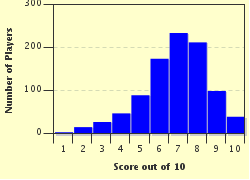Quiz Answer Key and Fun Facts
1. Around what body of water will you find the region known as the Ring of Fire?
2. The current explanation for the geologic processes behind the Ring of Fire is that large pieces of the Earth's surface, called plates, are moving around. What is the name for the field of study which investigates this motion?
3. On the west coast of South America, the Andes Mountains are the visible product of an ongoing process in which an oceanic plate runs into a continental plate, and slides underneath it. What is the term used to describe this process?
4. What is the name of the plate that is involved in convergence with the South American Plate along most of the western coast of South America?
5. The Cocos Plate is largely responsible for Mexico's very active volcanoes. Which of these volcanoes is NOT found in the Trans-Mexican Volcanic Belt, which is also called the Sierra Nevada?
6. Mt St Helens, shown here during its 1980 eruption, is probably the best-known of the volcanoes along the west coast of North America, but it is only one of 20 major volcanoes and over 4,000 volcanic vents in the area where the Gorda and Juan de Fuca plates are converging on the North American plate along the Cascadia Fault. What is the name given to this region?
7. Canada's Northern Cordillera Volcanic Province, which contains most of Canada's most active volcanoes, is unusual because its activity is caused by the Pacific Plate moving past the North American Plate along the Queen Charlotte Fault. The resulting extension of the continental plate leads to volcanic activity through a process more commonly found in the middle of oceans. What is it called?
8. Russia's Kamachatka Peninsula, on the northwest 'corner' of the Ring of Fire, has a number of active volcanoes, of several different types, including both stratovolcanoes and shield volcanoes. Which type of volcano is shown in this photo taken from the International Space Station?
9. Indonesia has some of the most active volcanoes in the world, due to its location at the site of convergence of three different plates. Which three plates are they?
10. The southern part of the Ring of Fire lies along the northern edge of Antarctica. Most of the volcanic activity is caused by extensional processes. What is the name of the mid-ocean ridge where much of the activity occurs?
Source: Author
looney_tunes
This quiz was reviewed by FunTrivia editor
agony before going online.
Any errors found in FunTrivia content are routinely corrected through our feedback system.


